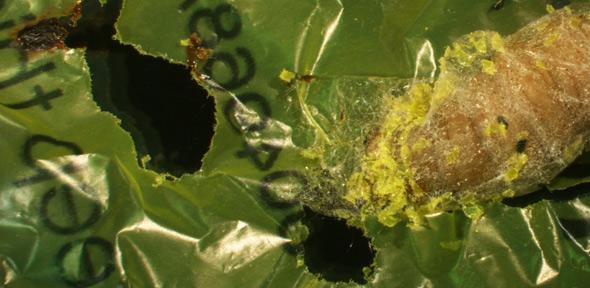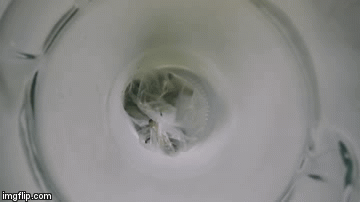Green, Research - Plastic Munching Caterpillar Could Save The World
A type of parasitic larvae commonly used as fishing bait turns out to have an appetite for plastic, raising hopes that it could be used for reducing the amount of plastic waste in the world.
The discovery of the way that Waxworms ingest and breakdown polyethylene plastic, one of the most degradation-resistant plastics, came purely by accident. Spanish biologist Federica Bertocchini was tending beehives and removed a number of the wax-eating eating caterpillars, placing them in a plastic bag for examination. When she later returned to the bag, it was riddled with holes.

Ms. Bertocchini realized the wax in a beehive and plastic share some chemical characteristics. "Wax is a polymer, a sort of 'natural plastic', and has a chemical structure not dissimilar to polyethylene," shesaid in a release. "The caterpillar produces something that breaks the chemical bond, perhaps in its salivary glands or a symbiotic bacteria in its gut," Bertocchini said. "The next steps for us will be to try and identify the molecular processes in this reaction and see if we can isolate the enzyme responsible."

According to the report of tests published in the journal Current Biology, researchers fed 100 plastic bags to some Waxworms. Within 40 minutes, the worms had chewed sizable holes. After 12 hours, they reduced a single bag by about one sixth of its original weight.
"This discovery could be an important tool for helping to get rid of the polyethylene plastic waste accumulated in landfill sites and oceans," said Cambridge's Paolo Bombelli, first author of the Waxworm study.
According to the Cambridge news release, "Polyethylene is largely used in packaging, and accounts for 40 percent of total demand for plastic products across Europe - where up to 38 percent of plastic is discarded in landfills. People around the world use around a trillion plastic bags every single year."








 Create PDF
Create PDF Print
Print Email to friend
Email to friend